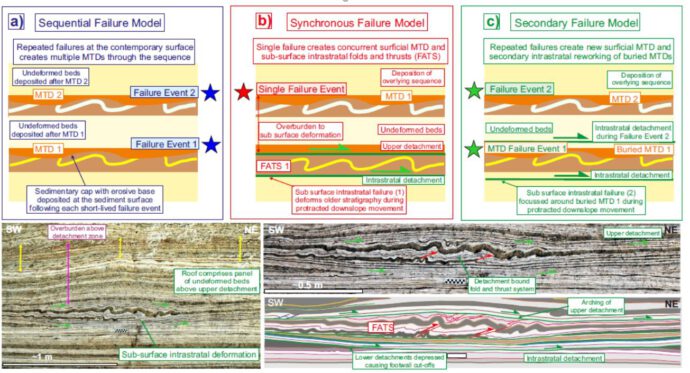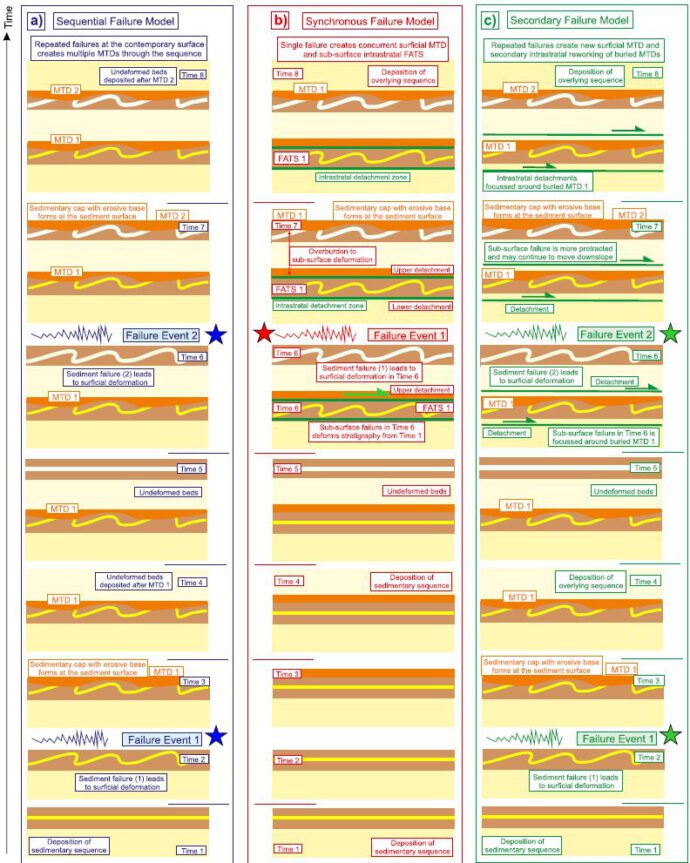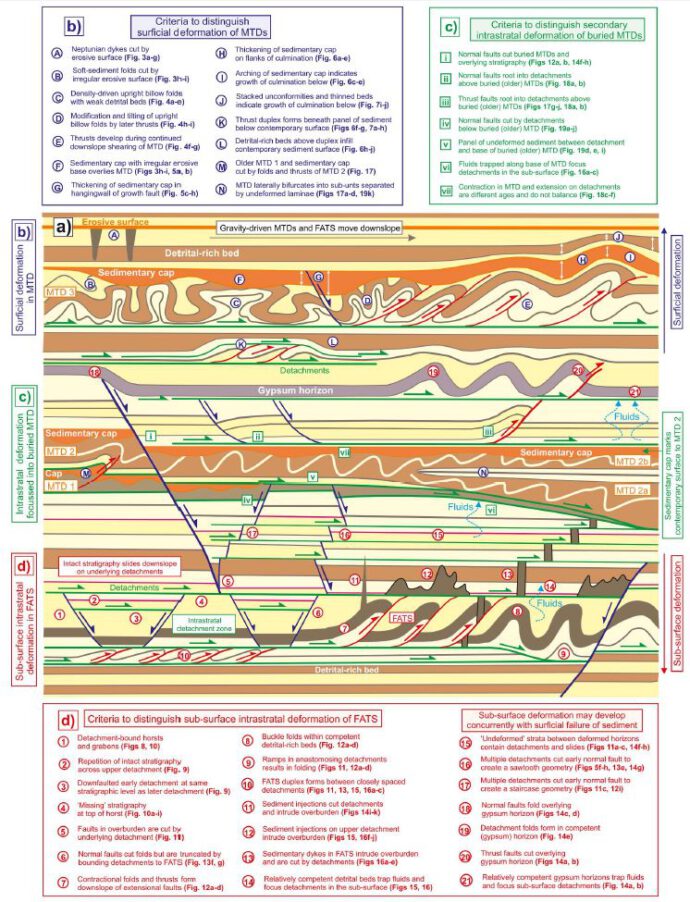Soft-sediment deformation structures are often used as evidence for paleo-earthquakes. When several deformed horizons are present, one has to ask whether repeated slope failure at the sediment surface has built-up the stratigraphic record. Another option would be that a single failure event could have concurrently created surficial and sub-surface deformed horizons at different stratigraphic levels. The implications of these differing models are important for the timing of palaeo-earthquakes. In a new paper, Alsop et al. used the late Pleistocene Lisan Formation from the Dead Sea Basin to catalogue and establish key criteria that help distinguish surface versus sub-surface intrastratal deformation of soft-sediments. The paper is available for free for 50 days!
Spoiler: You will find the most wonderful photos and sketches of soft sediment deformation features in this paper!



Reference
Alsop, G. I., Marco, S., & Levi, T. (2022). Recognising surface versus sub-surface deformation of soft-sediments: Consequences and considerations for palaeoseismic studies. Journal of Structural Geology, 104493.



No Comments
No comments yet.